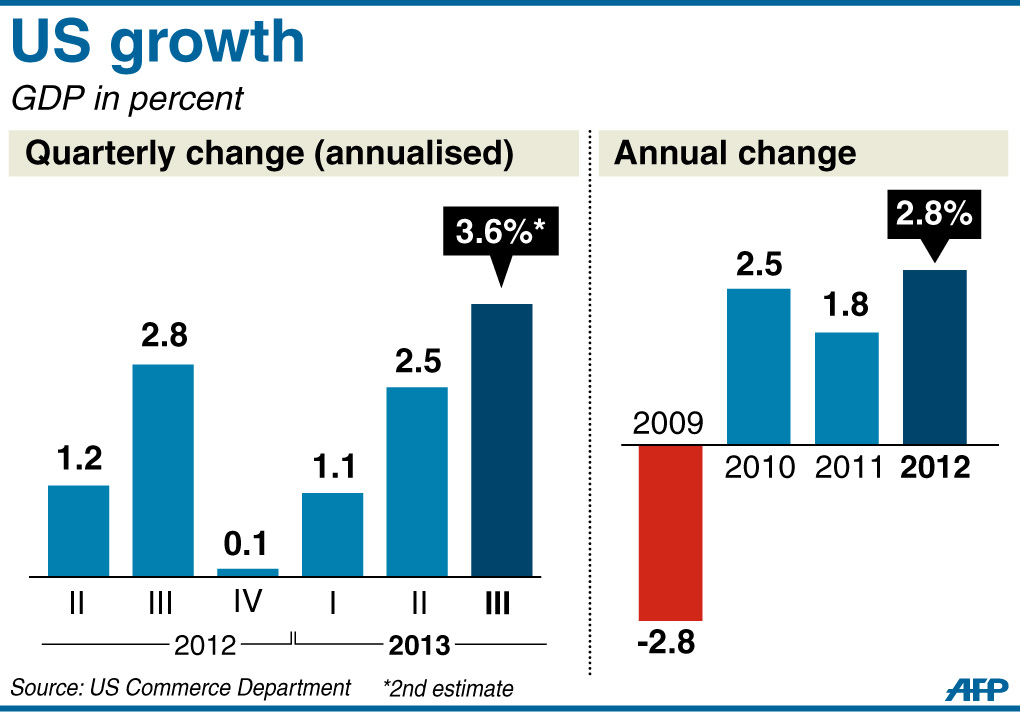WASHINGTON—The US economy grew at a speedy annual rate of 3.6 percent in the third quarter on inventory investment, the best growth in almost two years, the government reported Thursday.
The Commerce Department revised sharply upward its first estimate of gross domestic product growth of 2.8 percent for the July-September quarter.
Most analysts had expected a more modest upward revision to 3.0 percent for the third quarter after 2.5 percent growth in the second quarter.
Inventory investment led the increase, adding 1.7 percentage points to the headline GDP number.
The strong third-quarter reading was the fastest growth since the 2012 first quarter’s 3.7 percent pace.
But analysts pointed out the headline figure masked weak details, including downward revisions to housing and also to consumer spending, which accounts for about two-thirds of US economic activity.
“Unfortunately, all the revision, plus a bit more, was in the inventory component, while final sales were revised down a tenth to 1.9 percent. There’s no momentum here,” said Ian Shepherdson of Pantheon Economics.
Final sales is calculated by subtracting the increase in inventory from GDP.
Jennifer Lee of BMO Capital Markets noted the better-than-expected reading “is for Q3 and we know that the current quarter started on a weaker footing.”
The pace of build-up in inventories is unsustainable and will have to slow in the coming quarters, but would likely be offset by stronger final sales, said Jim O’Sullivan of High Frequency Economics.
But O’Sullivan said there was no sign in the ISM purchasing managers surveys or employment data of any significant slowing in overall growth in the fourth quarter.
“We believe GDP has been undercounted, at least prior to Q3,” he said.
The report came as the Federal Reserve weighs whether the economy is strong enough to allow it to begin scaling back its massive monetary stimulus. The central bank will review its $85 billion a month asset-purchase program at its December 17-18 policy meeting.
A key factor in the Fed’s decision to taper will be a significantly improving jobs picture.
The GDP data came a day ahead of the Labor Department’s November jobs report. Analysts on average expect job growth slowed to 188,000 from 204,000 in October, and the unemployment rate will dip a tenth point to 7.2 percent.


